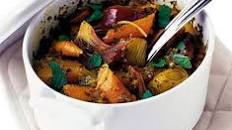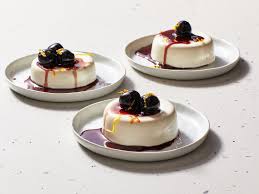The Art of Cooking Tajine: A Moroccan Culinary Delight
When it comes to Moroccan cuisine, one dish stands out as a true symbol of the country’s culinary tradition – the tajine. This iconic North African dish not only tantalises taste buds but also showcases the artistry and cultural heritage of Morocco.
What is Tajine?
Tajine refers to both the earthenware pot in which the dish is cooked and the aromatic stew-like meal prepared in it. The conical lid of the tajine allows for steam to circulate, resulting in tender meats, flavourful vegetables, and perfectly blended spices.
Ingredients and Flavours
A typical tajine comprises a combination of meat (such as lamb, chicken, or beef), vegetables (like carrots, potatoes, and tomatoes), dried fruits (such as apricots or prunes), nuts, and an array of spices including cumin, cinnamon, turmeric, and paprika. The sweet and savoury flavours come together harmoniously to create a truly unique taste experience.
The Cooking Process
Preparing a tajine is not just about cooking; it’s a slow and mindful process that requires patience and attention to detail. The ingredients are layered in the tajine pot with precision, allowing them to simmer slowly over low heat until they reach a meltingly tender consistency.
Serving Tajine
Tajine is traditionally served family-style, with diners gathering around the communal pot to savour its fragrant contents. The dish is often accompanied by couscous or crusty bread to soak up the delicious sauce.
Symbolism and Tradition
Beyond its culinary appeal, tajine holds deep cultural significance in Morocco. It symbolises hospitality, unity, and shared moments of joy around the dining table. In Moroccan households, preparing tajine is an art passed down through generations.
Experience the Magic
To truly appreciate Moroccan cuisine and immerse yourself in its flavoursome heritage, be sure to indulge in a steaming hot tajine during your visit to this vibrant country. Whether you opt for a meat-based version or explore vegetarian options like vegetable or fish tajines, each bite will transport you to the heart of Morocco’s culinary soul.
Exploring the Rich Flavours and Cultural Heritage of Moroccan Tajine
- 1. Bursting with exotic Moroccan flavours.
- 2. Tender and succulent meat cooked to perfection.
- 3. Aromatic blend of spices that awaken the senses.
- 4. Versatile dish with endless ingredient combinations.
- 5. Promotes communal dining and sharing of meals.
- 6. Reflects the rich cultural heritage of Morocco.
Challenges of Cooking Moroccan Tajine: Time, Tools, Versatility, and Texture
1. Bursting with exotic Moroccan flavours.
Indulge in the irresistible allure of Moroccan cuisine with tajine, a dish bursting with exotic flavours that transport your taste buds to the vibrant streets of Morocco. The harmonious blend of aromatic spices, tender meats, and vibrant vegetables creates a symphony of taste that is both comforting and exhilarating. Each bite of tajine offers a sensory journey through the rich culinary heritage of Morocco, making it a must-try for food enthusiasts seeking an authentic and flavourful experience.
2. Tender and succulent meat cooked to perfection.
Indulge in the culinary delight of Moroccan tajine and savour the pro of tender and succulent meat cooked to perfection. The slow cooking process in the traditional earthenware pot allows the meat to become incredibly tender, soaking up the rich flavours of aromatic spices and vegetables. Each mouthful of tajine offers a melt-in-your-mouth experience that showcases the artistry and expertise behind this iconic Moroccan dish.
3. Aromatic blend of spices that awaken the senses.
Indulge in the aromatic blend of spices found in Moroccan tajine, a culinary delight that truly awakens the senses. The harmonious mix of cumin, cinnamon, turmeric, and paprika creates a symphony of flavours that transport you to the bustling spice markets of Morocco with just one bite. Each spice adds depth and complexity to the dish, tantalising your taste buds and leaving you craving more. Experience the magic of these fragrant spices as they infuse every ingredient with warmth and richness, making every mouthful a sensory journey worth savouring.
4. Versatile dish with endless ingredient combinations.
The versatility of Moroccan tajine is truly remarkable, offering endless possibilities for ingredient combinations. From succulent meats to an array of vegetables, aromatic spices, and sweet dried fruits, the tajine allows for creative culinary experimentation. Whether you prefer a traditional lamb and prune tajine or a modern twist with seafood and olives, the adaptability of this dish ensures that every meal is a delightful and flavourful experience.
5. Promotes communal dining and sharing of meals.
In Moroccan culture, one of the significant pros of enjoying tajine is its ability to promote communal dining and the sharing of meals. Gathering around a steaming tajine pot encourages a sense of togetherness and fosters bonds between family and friends. The act of sharing food from a central dish not only creates a warm and inviting atmosphere but also symbolises unity and hospitality, making every meal a memorable and enriching experience.
6. Reflects the rich cultural heritage of Morocco.
The preparation and enjoyment of tajine in Moroccan culture reflect the deep-rooted traditions and rich cultural heritage of the country. From the careful selection of ingredients to the slow cooking process that brings out intricate flavours, tajine embodies centuries-old culinary practices passed down through generations. Each bite of this iconic dish not only offers a taste sensation but also serves as a culinary homage to Morocco’s diverse influences, traditions, and vibrant history.
Long cooking time
Tajine dishes, while rich in flavour and tradition, come with the con of requiring a lengthy cooking process. The slow simmering over low heat is essential to achieve the tender textures and melded flavours characteristic of tajine cuisine. However, this meticulous cooking method can be impractical for those seeking quick and convenient meal options. The time commitment involved in preparing a tajine may deter individuals looking for swift meal solutions, making it more suitable for occasions when one can savour the unhurried art of culinary creation.
Special equipment needed
Cooking tajine traditionally presents a challenge due to the requirement of a specific earthenware pot with a conical lid, essential for achieving the dish’s signature flavours and textures. This unique cooking vessel may not be easily accessible in all kitchens, posing a limitation for those eager to recreate the authentic Moroccan culinary experience at home. However, with some creativity and adaptation, alternative cookware can be used to capture the essence of tajine while still honouring its rich cultural heritage and intricate cooking method.
Limited versatility
While undeniably delicious, one drawback of Moroccan tajine dishes is their limited versatility. Due to their stew-like consistency and familiar flavour profile, tajines may not cater to individuals seeking a wide range of culinary experiences. The rich and aromatic nature of tajine preparations, while comforting and traditional, may lack the variety that some diners crave in their gastronomic adventures.
Tough meat texture
In the realm of Moroccan cuisine, one potential drawback of preparing tajine dishes lies in the texture of the meat. The slow cooking method, while intended to yield succulent and tender results, can occasionally lead to meats becoming excessively soft or tough if not overseen with care. Achieving the perfect balance between tenderness and chewiness requires meticulous attention during the cooking process to ensure that each bite remains a delightful culinary experience.




